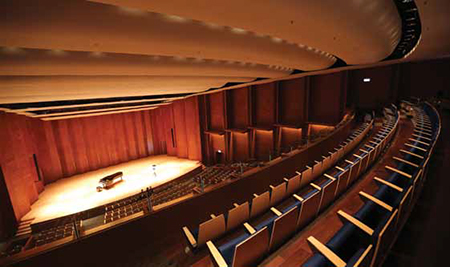Our business has gone through a change, which accelerated drastically around 2010. We are starting to see system designs that place all devices on networks for control, media transport, and media routing. I used to think that the heart of every AV system was the matrix switcher, the audio processor, or the control system, but these days, it seems like the heart of every AV system we are designing is the network switch. If that is truly the case, regardless of the debate as to who is providing said switch, we all need to accept the fact that our systems are now just networks.
The network switch is the new heart of our systems, and we need to learn how to use them to their fullest extent; truth be told, they really are great at what they do when they are properly configured. They can route audio or video, they can power devices, they can control devices, they can help troubleshoot devices, and they are relatively cheap compared to traditional matrix switching technology in almost every comparison I’ve tried to do over the years. There is a catch though: to use them properly, you need to know how to configure, troubleshoot, and properly configure them for other devices that may also be on the same network, or same network switch. This is why we are all transitioning to network specialists faster than most of us know. We must though, because once you start linking a bunch of AV devices together on a network, sometimes they don’t play nicely with each other. We are almost always tasked with finding out why, and either figuring out which setting is wrong or relying on a manufacturer to update firmware.

The Grand Hall within the Lee Shau Kee Lecture Centre at the University of Hong Kong is an AVB installation featuring the Meyer Sound CAL column array loudspeaker and Biamp Tesira system. News flash: this has been standard in the IT-based network industry for decades. Every time a new network is spun up, IT departments leave time in their schedules to configure them based on many hard-learned lessons of their past. When devices are networked together, they become symbiotic in a way that can be good, or can wreak havoc on a system. Finding what causes the havoc can be time-consuming and difficult to track down, especially if it’s random. It could be that a small device is spewing excess network packets all over a network and blocking important ones because of some obscure setting in a drop-down menu. It could be firmware produced by a manufacturer that doesn’t like to be pinged often. Initially, we might find ourselves spending more time tracking down these types of problems, than actually setting an EQ curve for a network-based audio system. We face a learning curve right now, not an EQ curve… I think we pretty much got the latter down!
- The good news is that once you get everything on a network to play nicely with each other, well-designed networks are very stable and reliable. Think about it, some financial institutions rely on networking systems to handle billions of dollars of transactions per second. That being said, we should be able to rely on them to get your end user’s PowerPoint presentation up on a flat screen display. Not only are networks reliable, stable, and cost effective, they can provide integrators and administrators with vast amounts of information that can troubleshoot just about any problem we might have. Think about it:
- * We can “ping” individual devices to see if they are alive.
- * We can log into each individual device to see how it is doing.
- * We can log into each individual device to adjust what it is doing.
- * We can cycle the power on each individual device if it seems to be acting erratically.
- * We can write standards-based software to communicate and issue commands to each individual device.
- * We can track when an event occurred that led to a problem.
- * We can track who last made adjustments to a system.
- * We can track what devices get used the most, or if at all.
- * We can cycle the power to individual power outlets that power the network itself.
The future is here. Crestron processors running more than 100 rooms on a major project designed by Joey D’Angelo for Charles M. Salter Associates. One power cord, one network cord. That’s it. Using all of the aforementioned tools, there really isn’t much we can’t do from a remote location. An integrator should be able to track down a bad device or cable from anywhere if a system is fully networked. The value this will add to our services for our end users, which are now IT professionals, will be unlimited. We should be able to diagnose and troubleshoot every system from afar, and, as a result, we should be able to monetize it.
Networking in general presents a variety of opportunities for the AV industry and the time is now to absorb expertise into our industry so that we can continue to grow, prosper, provide increased value, enhance the quality of our work, and profit.
Joey D'Angelo (joseph.dangelo@cmsalter.com) is a vice president at Charles M. Salter Associates. He has worked at Salter for 16 years, since the day he graduated from Cal Poly SLO and has since completed over 405 projects. He likes to be challenged professionally, listens to punk rock, and plays many instruments.
